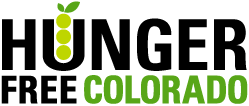August 9, 2016 – Human service programs ensure that Colorado communities have the building blocks for a prosperous future, such as food, health care, child care and financial assistance. An interactive dashboard, released this week, aggregates county-level data to provide a clear picture of how these programs are ensuring the well-being of all Coloradans.
Funded by various combinations of state revenue and federal dollars, the Supplemental Nutrition Assistance Program (SNAP), the Special Supplemental Nutrition Program for Women, Infants and Children (WIC), Colorado Child Care Assistance Program (CCCAP), Colorado Works and Medicaid all provide resources so that Coloradans get support to maintain a solid foundation throughout their lives.
The new Human Services Gap Map features caseload and performance data from all of these programs in one place for the first time to show how these programs are helping people in their communities.
Developed by a coalition of Colorado nonprofit organizations working to align human service programs, the Human Services Gap Map provides a window into how effectively Colorado counties are delivering the basic building blocks needed for lifelong health and well-being. It lets stakeholders identify which counties are performing well and explore the factors influencing that performance.
Using the most current fiscal, administrative and census data available, this tool offers a county-by-county comparison of enrollment, allocations and costs for SNAP, WIC, CCCAP, Colorado Works and Medicaid.
Key features of the dashboard include:
- Caseload data for each program by county with estimates of how many people may still be eligible for these basic needs programs.
- Fiscal data displaying how taxpayer dollars are spent on these programs, as well as benchmarks for efficiency.
- Performance data for programs funded by federal block grants and analysis tools for determining the true costs of serving eligible families.
The project was led by the Colorado Center on Law and Policy (CCLP) with support from The Bell Policy Center, Colorado Consumer Health Initiative, Colorado Covering Kids and Families, and Hunger Free Colorado. CCLP gathered and analyzed current data, worked with partners to develop content, and contracted with Generation Web to design and develop the website.
“As residents, it’s our imperative to promote and align key human service programs to support the health and well-being of all Coloradans,” said Claire Levy, Executive Director of the Colorado Center on Law and Policy. “The Human Services Gap Map is an important and useful tool that could help administrators and decision-makers increase accountability, transparency and planning to improve access, effectiveness and integration of core health and work-support programs.”
About the Gap Map coalition — In 2015, a national grantor provided Hunger Free Colorado with funding to collaborate on improving the access, effectiveness and integration of core health and work-support programs in Colorado. Together, with the Colorado Center on Law and Policy, The Bell Policy Center, Covering Kids and Families and the Colorado Consumer Health Initiative, these five subject matter experts developed a data dashboard that melds the particular focus areas for each organization in an accessible way for community stakeholders. The result is the Human Services Gap Map, a public-facing nexus of information for five different human services programs (housed in three different state departments) available at GapMap.org.
Media Contacts:
Bob Mook, 303-573-5669, ext. 311
Ellie Agar, 303-228-7973
